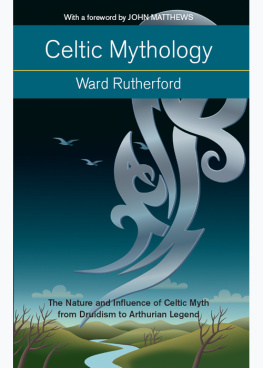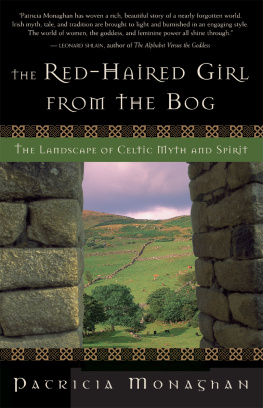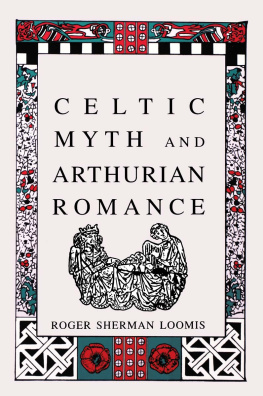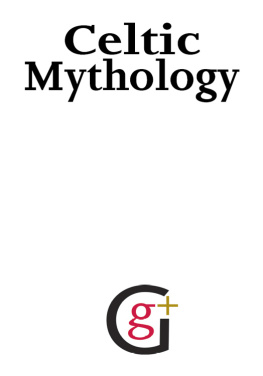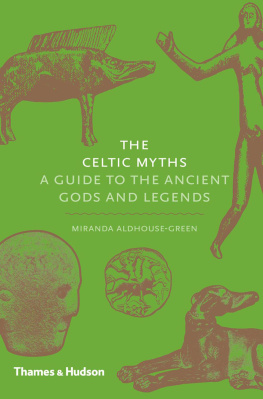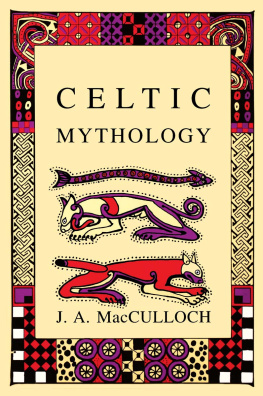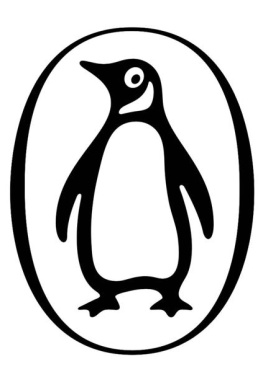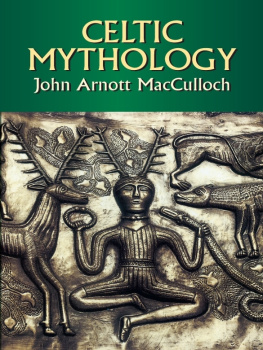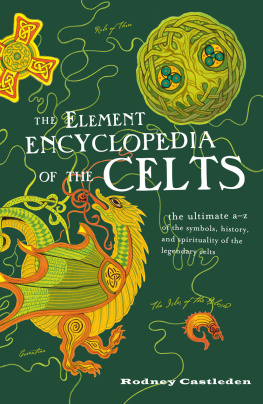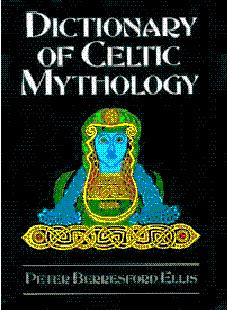
ACKNOWLEDGEMENTS
I would like to thank Nikolai Tolstoy for permission to quote extensively from his book The Quest for Merlin, and Nigel Blair and my old friend Piers Gascoigne for assistance in digging out some of the rare tomes I wanted to consult.
This edition first published in 2015 by Weiser Books
Red Wheel/Weiser, LLC
With offices at:
665 Third Street, Suite 400
San Francisco, CA 94107
www.redwheelweiser.com
Sign up for our newsletter and special offers by going to www.redwheelweiser.com/newsletter.
Copyright 1987 by Ward Rutherford
Foreword Copyright 2015 John Matthews
All rights reserved. No part of this publication may be reproduced or transmitted in any form or by any means, electronic or mechanical, including photocopying, recording, or by any information storage and retrieval system, without permission in writing from Red Wheel/Weiser, llc. Reviewers may quote brief passages. Originally published in 1987 by Aquarian Press, a part of the Thorsons Publishing Group ISBN: 0-85030-551-9.
ISBN: 978-1-57863-586-3
Library of Congress Cataloging-in-Publication Data available upon request
Cover design by Graham Lester
Text design by Jane Hagaman
Typeset in Minion Pro
Printed in the United States of America
EBM
10 9 8 7 6 5 4 3 2 1
www.redwheelweiser.com
www.redwheelweiser.com/newsletter
Contents
LIST OF ILLUSTRATIONS
(Between pages 75 and 82)
PRONOUNCING GLOSSARY OF CELTIC NAMES
It is, of course, possible to render Celtic place and personal names phonetically, but the difference between these and the spellings likely to be encountered in other versions is so great that one may not be recognizable as the other. For example, it would need some ingenuity to realize that a name written as Dalna in its phonetic form was that written Dealgnaid in sources which chose to remain closer to the original. For this reason I have tried to stick to the Celtic versions. At the same time, it must be understood (1) that the phonetic forms offered here are no more than a broad guide to pronunciation, and (2) that there are no consistent rules for, particularly, Gaelic spellings. The name which I have rendered as Cu Chulainn can with equal correctness be spelt Cuchulainn Cu Chulaind, Cuchullin and in several other ways. Nor do I claim that the following list is exhaustive. Only those names which occur most frequently have been included.
Note: italicized syllables are stressed
Aoife: Eef-ay
Ailill: Al-ill
Amergin: Am-org-in
Aneirin: An-oi-rin
Annwn: An-noon
Annwvyn: An-oov-an
Arawn: A-rown
Arianrhod: Aree-an-rod
Badb: Baav
Balor: Bah-lorr
Beltaine: Bail-tin
Bile: Bee-leh
Blodeuwedd: Blod-ai-weth
Bodb: Bov
Cathbhad: Cath-va
Cernunnos: Ker-noon-os
Cerridwen: Ker-id-wen
Cian: Kee-an
Conare: Kon-ar-ee
Conchobhar: Con-ah-khar
Cuailnge: Cooley
Cu Chulainn: Coo Hool-in
Curoi: Cur-ree
Dealgnaid: Dal-na
Dechtine: Det-een-eh
Derdriu: Deer-dree
Diancecht: Jan-kett
Diarmait: Der-mot
Diwrnach: Dur-nakh
Dyfed: Duv-it
Emer: Ev-air
Eochaid: Yo-hee
Etain: Ett-an
Evrawg: Eff-rowg
Ferdia: Fer-dee-ah
Fianchuive: Fee-an-kheev-eh
Finn mac Cumhail: Finmac Cumm-al
Finnabair: Finn-av-eer
Fuamnach: Foo-na
Gabra: Gow-ra
Gilvaethy: Ghil-vath-ee
Goronwy: Gor-on-wee
Gwalchmei: Goo-alkh-meh
Gwawl: Goo-owl
Gwent Ys Coed: Gwent uss Coit
Gwrhyr: Gur-heer
Gwydion: Gwud-yon
Gwynedd: Gwin-eth
Gwynhwyvar: Gwin-hwee-var
Iolo Morganwg: Ee-oll-o Mor-gahn-ook
Kulhwch: Kil-hookh
Law Gyffes: Low Guff-ez
Llasar Laes Gyngwyd: Hlass-ar Lyze Gung-wud
Lleu: Hlye
Llevelys: Hlev-ell-iss
Lludd: Hlooth
Llyr: Hleer
Loeg: Leekh
Lugh: Lookh
Mabinogion: Ma-bin-og-ion
Macha: Mah-kha
Mag Tuan: Moy Too-ra
Mallolwch: Ma-hlol-lukh
Manawyddan: Man-ow-eeth-an
March: Markh
Mathonwy: Math-on-wee
Mebd: Maev
Menoo ap Tair-noo-ayth
Menw ap Teirnaedd:
Mider: Meeth-er
Mile: Mee-leh
Miodhchaoin: Mee-than
Mor-rig-ahn
Morrigan:
Myrddin: Mer-thin
Niamh: Nee-av
Nuada: Noo-da
Oengus: Engus
Oisin: Ush-een
Pryderi: Prid-er-ree
Pwyll: Pwill
Rhiannon: Hree-ah-non
Rhonabwy: Hron-ahv-wy
Sadb: Shahv
Samain: Shah-vin
Scathach: Skah-thakh
Sidh: Shoe
Sualdam: Sool-dam
Tain Bo Cuailnge: Tahn Bo Cooley
Taliessin: Tal-yess-in
Tarbfeis: Tar-vaysh
Teirnon Twyrvliant: Tair-non Turv-lee-ant
Tir na n'Og: Teer nahn Ock
Tuan mac Cahill: Toon mac Car-il
Tuatha De Danann: Tootha Day Dah-nan
Tuirenn: Teer-enn
Twrc Trwyth: Turkh Troo-ith
Uath mac Imoman: Ooth mac Immoman
Ysbaddaden: Liss-path-ad-an
FOREWORD TO CELTIC MYTHOLOGY
Ward Rutherford's Celtic Mythology is a classic and justly so. The sub-title is a key to the way the book works: The Nature and Influence of Celtic Myth, from Druidism to Arthurian Legend. Despite it's comparatively short extent it packs an impressive amount of material into its 176 pages, discussing Druids, the structure of Celtic myth and legend as it appears in the mythological writings of the Irish and Welsh, and the first stirrings of what would become the Matter of Britainthe Arthurian Legends. This makes the book particularly valuable, as there are still few that approach this complex subject.
Despite the advances in our knowledge of the subject made in the years since Rutherford's book first appeared, there is much here that stands up well in the face of these recent discoveries. It paints a brilliant portrait of the Celtic world and the way the people of those distant times interpreted the world around them though the creation of myths and legends. Above all Rutherford avoids the tricky matter of interpretation, which makes his book all the more useful, leaving those who read it today free to draw their own conclusions.
Here you will find what little information is available on the Druids, and details of the huge literature, dating from the 17th century, in which these few scattered remarks are used as the basis of a reconstructed belief system that holds good to the present.
Another important aspect is the spiritual background to the myths. This explores the nature and qualities of the Celtic pantheon, which in many ways parallels that of the Classical world, but with its own unique and distinctive twist.
Rutherford also deals with the other important strand of Celtic myth - the Otherworld. So much material has survived about this from Native British and Irish sources that we can see at once how important it was to the people we have come to know as the Celts. It offers a key to understanding their beliefs and traditions, which though they may seem far away from us now, nonetheless have much to tell us.
Next page
